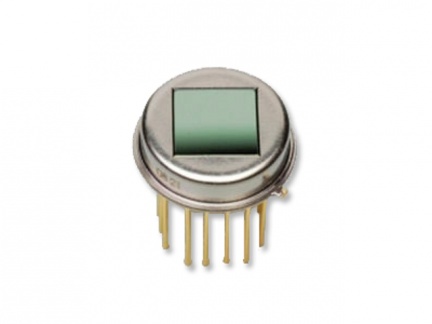Types of infrared detectors
Infrared detectors include:
Standard InGaAs photodiodes have a spectral response in the range of 0.9 to 1.7 µm. Short-wavelength InGaAs detectors cover a range as low as 0.5 µm. In contrast, long-wavelength versions can go up to 2.6 µm.
Hamamatsu 's high-speed InGaAs avalanche photodiodes enable the detection of weak signals in the infrared spectral region from 950 to 1700 nm.
InGaAs photodiode arrays consist of several InGaAs photodiodes arranged either in a row sensor or in a two-dimensional array.
Hamamatsu 's InAs photovoltaic detectors are characterized by high speed combined with low noise. They are capable of detecting infrared radiation down to about 3.5 µm.
Hamamatsu 's photovoltaic InAsSb detectors are characterized by a wide spectral band with high sensitivity (bandwidths of 5, 8 and 10 µm) due to the unique crystal growth technology.
Thermoelectrically cooled photoconductive InSb detectors are characterized by high speed and sensitivity. They are capable of detecting infrared radiation down to more than 6 µm.
Typical features of photovoltaic InSb detectors include high speed and low noise. They provide high sensitivity in the region between 3 and 5 µm. Liquid nitrogen is used for cooling.
Two-colour detectors contain two different photosensors, with one sensor mounted over the other along the same optical axis. Each is sensitive to a different spectral region and the whole component can thus detect a wide spectrum of radiation.
- HgCdTe detectors (MCT = Mercury Cadmium Telluride sensors)
Detection modules
These modules integrate an infrared detector and a preamplifier into one housing. For measuring very weak signals, versions with thermoelectric cooling or liquid nitrogen cooling are used.



